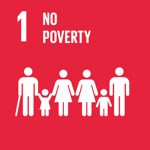Sweet Potato Products Development in Latin America
 Peru
Peru
 Argentina
Argentina
 Dominican Republic
Dominican Republic
 Venezuela
Venezuela
Executive Summary
The project structered eight sub-projects with the aim of developing sweetpotato products for human and animal consumption, both directly and those resulting from the processing of roots and foliage.
- The production and consumption of sweetpotato paste in baby food was evaluated.
- Productive root varieties were selected and the foliage yield of different clones and the effect of their consumption by animals were estimated.
- It was shown that root meal can complement corn in sheep diets, without detriment to yield and meat quality.
- It was also shown that the addition of sweet potato to feed corn increases milk production.
- Five dual-purpose (simultaneous production of roots for human consumption and foliage for animal feed) clones were selected from the CIP germplasm collection.
- In terms of new product development, a local variety was genetically modified with the wheat glutenin gene to improve the quality of sweetpotato flour for use in baking and other industrial processes.
- A shorter procedure was developed to produce sweetpotato plants transformed by somatic embryogenesis, reducing the time from six to two months.
- A post-harvest technology was successfully tested on the roots for export purposes, including curing the roots to avoid deterioration during the shipping period.
The technological solution
Because of the structure of the project, the technological solutions are several including a number of productive and versatile varieties of sweetpotato, suitable for human and animal consumption and industrial processing, ready for multiplication in seedbeds and dissemination to small farmers. There is also an innovative, faster process of somatic embryogenesis of genetically modified plants that can be adopted by several laboratories in the region. A root-curing technology was proposed to improve the conditions of conservation of the product for export. The nutritional work has generated food supplements for children in vulnerable situations that can help reduce malnutrition and strengthen sweetpotato value chains.
Results
Highly productive sweetpotato clones, suitable for starch and flour production, were identified. A variety released in Cañete, Peru was adopted, covering more than 50% of the cultivated area. Varieties sent to Nicaragua have been multiplied in seedbeds and distributed to thousands of small farmers. A post-harvest root-curing process was made available to exporters for validation in storage chambers. Food insecurity was characterized in five poor areas of Lima and the technical and economic feasibility and nutritional value of an instant mash for children under 3 years of age was evaluated and successfully tested by mothers and children. Twenty-eight transgenic lines of sweet potato with the wheat glutenin gene, regenerated by somatic embryogenesis, were generated. Four varieties were identified with potential for fresh consumption and fried flakes processing. Nineteen accessions were selected as dual purpose crops, foliage for animal feed and roots for human consumption or as foliage producers. Information was generated on the use of sweet potato flour as animal feed.
Beneficiaries
The project has a number of different target groups and beneficiaries. Firstly, the information generated about the potential of sweetpotato varieties for various uses, post-harvest management for export, the nutritional value of poorly nourished baby food, and the use of sweetpotato products and sub-products in animal feed benefits researchers, extensionists, policy makers, and sweetpotato farmers. Indirectly, the results benefit seed producers, livestock owners, processors of flour and related products, and consumers in general. The international nature of the project has favoured intra-regional collaboration and the flow of information between institutions.
Sustainable Development Goals


Participating Organizations
Executor
- Centro Internacional de la Papa (CIP) - Perú
Associated
- Fondo Nacional de Investigaciones Agropecuarias (FONAIAP) - Venezuela
- Instituto de Investigación Nutricional (IIN) - Perú
- Instituto Nacional de Innovación Agraria (INIA) - Perú
- Instituto Nacional de Tecnología Agropecuaria (INTA) - Argentina
- Universidad ISA (ISA) - República Dominicana
- Universidad Nacional Agraria La Molina (UNALM) - Perú




